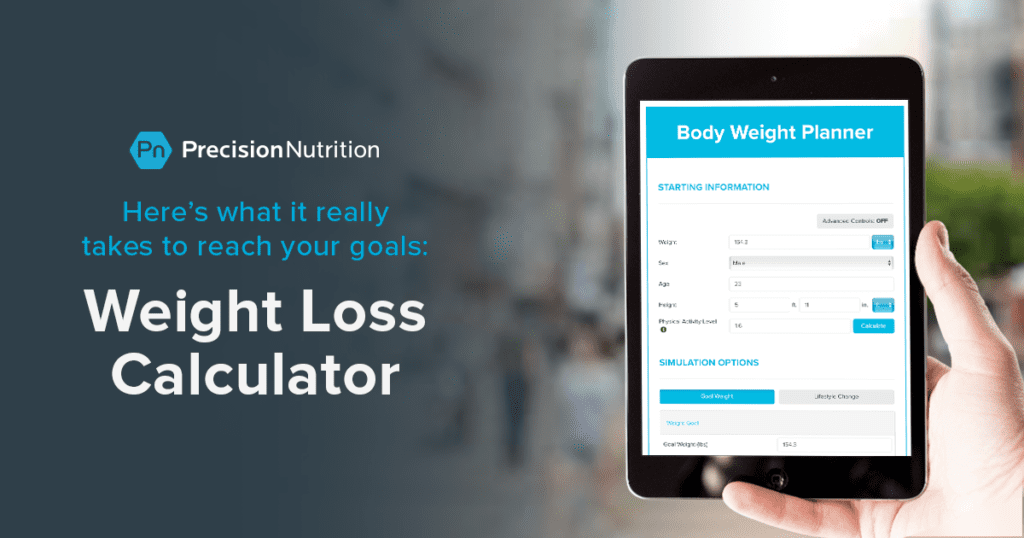Most people who count calories for weight loss or weight management assume it’s an exact science. It’s not. Here we outline 5 reasons calorie counting (i.e. logging your food to calculate intake) is fundamentally flawed.
++++
Make no mistake, the principles of energy balance work:
Take in more calories/energy than you expend, you gain weight.
Take in fewer calories/energy than you expend, you lose weight.
However, counting calories as a way to try to know, and control, your energy intake is fundamentally — sometimes hopelessly — flawed.
For starters, you can’t really trust that the calorie (and macronutrient) numbers you see on food packages are accurate. You see, the way they’re calculated — if they’re calculated at all — is surprisingly imprecise.
Plus, even if food package numbers were precise, once the food is cooked, or chopped, or blended, the amount of energy available for digestion and absorption changes.
Then there’s what happens once that food enters your body…
In the end, even something that seems as simple as knowing how many calories you’re taking in (and absorbing) can be influenced by dozens of unexpected factors.
That’s why, today, we share the 5 biggest (and surprising) problems with calorie counting as it relates to the “calories in” side of the energy balance equation.
Want to download the infographic and have it on hand to show friends (or clients)? Click here for printer- and tablet-friendly versions.

Okay, we know all of this is going to blow some minds. Especially with the current fascination around calorie tracker websites and apps.
But once you’ve had some time to let it sink in, please download the infographic and spread the word.
And if you want to learn about the other side of the calorie counting equation, check out Part 2: ‘Calories Out’.
(Maybe even check out our Calorie Control Guide or simplified infographic and share those too).
Some important notes
Lowercase ‘c’
For the scientists among our readership: Throughout the introduction and infographic, ‘calories’ — lowercase ‘c’, refers to kilocalories — or ‘Calories’. Over time, popular language has lost the big C/little c distinction.
Section 1: “Calorie counts are imprecise.”
In 1896, Wilbur O. Atwater, the father of food calories, sampled hundreds specimens of food products collected at the World’s Fair. Atwater calculated the caloric value of each food using bomb calorimetry, a very accurate and precise method for measuring total energy in any object.
Interestingly, a wide range of total caloric values was found, even for single food types (i.e. apples) bred, picked, and stored identically. As a result, the Food and Agriculture Organization of the United Nations said in a statement:
“Foods, being biological materials, exhibit variations in composition; therefore a database cannot accurately predict the composition of any given single sample of food.”
Even more interesting: Atwater’s total caloric ranges were used to produce the kcal averages still in use on labels and in databases today. (They’re over 100 years old!) For a given food these values could be up to 50% off, as outlined in the infographic.
Bottom line: The trust many of us feel that calorie labels and nutrient databases are exact (or even accurate and reliable) may be misguided.
Section 2: “Calorie counts that reflect only what we’ll absorb.”
The averages of 4 kcals per gram of protein, 9 kcals per gram of fat, and 4 kcals per gram of carbohydrates — meant to reflect how much energy we actually absorb from food since these values are lower than the energy measured in the food — are Atwater general correction factors developed in 1897 and still in use today.
Subsequently it’s been discovered that carbohydrates high in fiber have different correction factors, depending on the type of fiber (and even your gut bacteria / microbiota).
It’s also been discovered that energy absorption from protein varies. Typical absorption from animal protein is higher than the general Atwater factor — for example, 4.36 kcals per gram of protein in eggs — and lower from most vegetables — generally 2.44 kcals per gram of protein. The revised absorption averages are called Atwater specific correction factors.
Calories on food labels usually use the general factors while the USDA database uses the specific factors.
Further complicating the question of absorption, a new correction factor was developed to take into account the energy burned through digestion of various macronutrients.
Livesey’s Net Metabolizable Energy values are:
- protein, 3.2 kcals per gram;
- fat, 8.9 kcals per gram;
- available carbohydrates, 3.8 kcals per gram; and
- fermentable carbohydrates, 1.9 kcals per gram.
Bottom line: The idea that a gram of any protein yields 4 kcal, a gram of any fat yields 9 kcal, and a gram of any carbohydrate yields 4 kcal is a gross oversimplification that could have significant implications when trying to control and balance calorie intake.
Section 5: “People aren’t great at eyeballing portion sizes.”
Research shows the people are generally terrible at estimating caloric intake. Even trained nutritionists underestimate calories in meals by an average of 30 percent.
We often get the portion sizes wrong too. When trying to serve ourselves 1 tablespoon of, say, peanut butter, we often end up getting much more than an actual tablespoon. And it doesn’t just happen once in a while… it happens most of the time.
References
Click here to view the information sources referenced in this article.
If you’re a coach, or you want to be…
You can help people build sustainable nutrition and lifestyle habits that will significantly improve their physical and mental health—while you make a great living doing what you love. We'll show you how.
If you’d like to learn more, consider the PN Level 1 Nutrition Coaching Certification. (You can enroll now at a big discount.)



Share